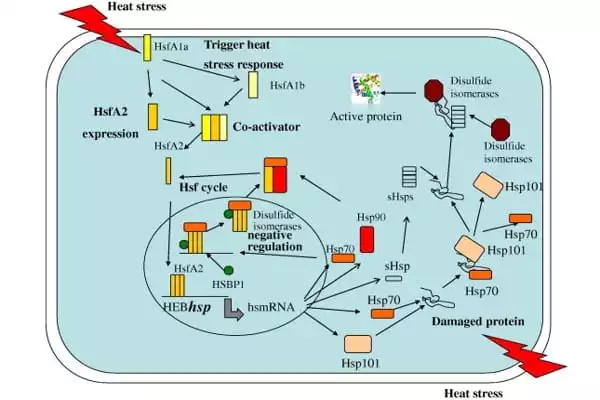Heat stress can have a serious impact on plants, just like it does on other species. They stimulate the heat shock response, a biochemical process used by human and animal cells for stress defense, to boost their chances of survival. Plant steroid hormones, according to researchers, can stimulate this reaction in plants.
In general, heat stress causes morphological damage in vascular plants such as leaf and branch burn, foliar senescence and abscission, inhibition of shoot and root growth, discoloration, and fruit destruction. Some species already live in extreme environments, such as the frigid poles in the dead of winter, the summit of tropical mountain peaks that receive tens of meters of rainfall each year, and deep in the parched deserts that cover one-third of the earth’s geographical area.
It may be difficult to remember in the dead of winter, but July 2021 was the warmest month ever recorded. The average temperature in the United States was 2,6 degrees Fahrenheit higher than the usual for July, while many southern European countries witnessed temperatures above 45 degrees Celsius, including an all-time high of 48,8 degrees Celsius recorded on the eastern coast of Sicily in Italy.
Heat stress can significantly damage plants in their natural habitats, destabilize ecosystems, and drastically reduce agricultural harvests, compromising our food security. Heat stress can have a serious impact on plants, just like it does on other species. They stimulate the heat shock response, a biochemical process used by human and animal cells for stress defense, to boost their chances of survival.
Professor Brigitte Poppenberger
The past several decades have seen a rise in the occurrence of heatwaves with record highs all across the world, which is attributed to climate change. Heatwaves are becoming more common, hotter, and endure longer, with serious repercussions not only for humans and animals but also for vegetation. “Heat stress can significantly damage plants in their natural habitats, destabilize ecosystems, and drastically reduce agricultural harvests, compromising our food security,” says Brigitte Poppenberger, Professor of Horticultural Crop Biotechnology.
Cells activate a molecular defense pathway for heat stress protection
Plants use a biochemical process known as the heat-shock response to survive brief episodes of heat stress. This heat-shock response (found in all organisms) protects cells from the harm caused by proteotoxic stress, which causes protein destruction. Heat stress is not the only cause of such stress; exposure to specific chemicals, UV light, or soil salinity can also induce it. The heat shock response protects cells in a variety of ways, one of which is the synthesis of heat-shock proteins, which act as molecular shields, preventing protein misfolding.

Brassinosteroids can increase the heat stress resistance of plants
Heat shock factors, as well as other molecular players, are activated in plants in response to heat stress. Hormones, in particular, act as chemical messengers. Brassinosteroids are hormones produced by plants that largely influence their growth and development. Brassinosteroids, in addition to their growth-promoting capabilities, have other intriguing properties, one of which is their capacity to boost plant heat stress tolerance, and researchers at TUM have just found what contributes to this protective function.
Using the model plant Arabidopsis thaliana, a research team lead by Prof. Brigitte Poppenberger was able to determine how brassinosteroids regulate an unique transcription factor – a special protein responsible for flipping certain portions of the DNA on or off. This transcription factor, known as BES1, can interact with heat shock factors, allowing genetic information to be directed toward higher production of heat shock proteins. When BES1 activity is enhanced, plants become more resistant to heat stress, and when it is diminished, they become more vulnerable to it. Furthermore, the researchers found that heat stress activates BES1 and that brassinosteroids increase this activation.
Potential applications in agriculture and horticulture
“These findings are not only of importance to biologists seeking to improve our understanding of the heat shock response, but they also have the potential for practical use in agriculture and horticulture,” Prof. Poppenberger says.
Plants from scorching deserts, such as the prickly cholla cactus, are no exception, and they have evolved a wide range of astonishing adaptations for surviving with North America’s hottest, driest environment, where a year’s worth of rainfall can fall in a single catastrophic event. These desert dwellers give us important insights into the biological and physical adaptations that allow for survival on a hotter, dryer planet prone to catastrophic catastrophes (as climate change experts are currently forecasting).
Brassinosteroids-containing biostimulants are commercially available and can be investigated for their ability to boost heat stress resistance in plants. These are natural goods that have been approved for organic farming and can thus be utilized without issue. Alternatively, BES1 could be a promising target for breeding strategies. This could be utilized to develop cultivars that are more resistant to heat stress, resulting in more steady yields during future heat waves.
















